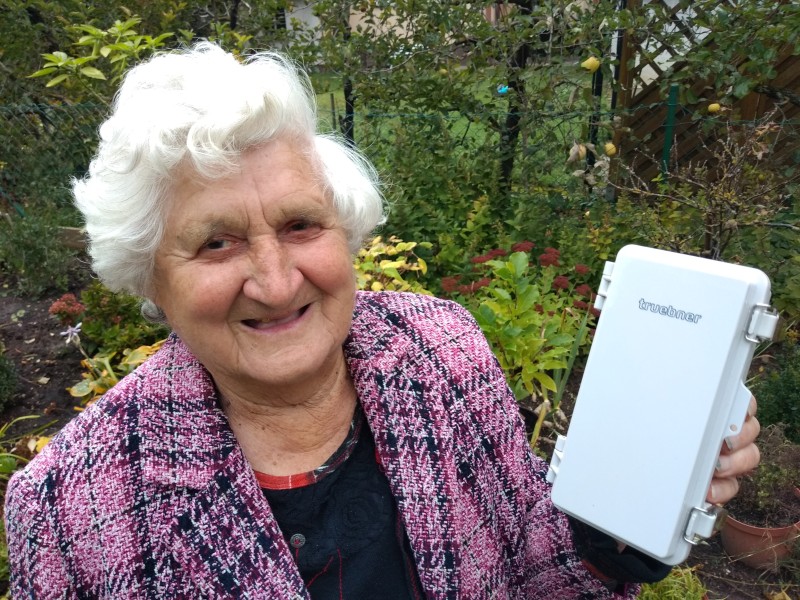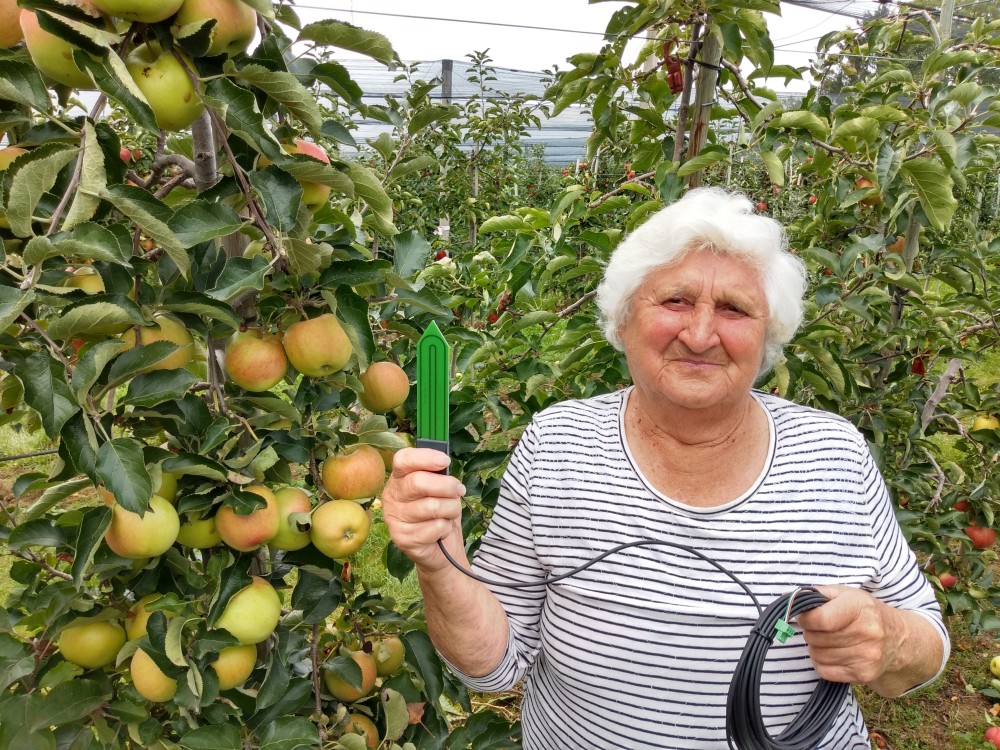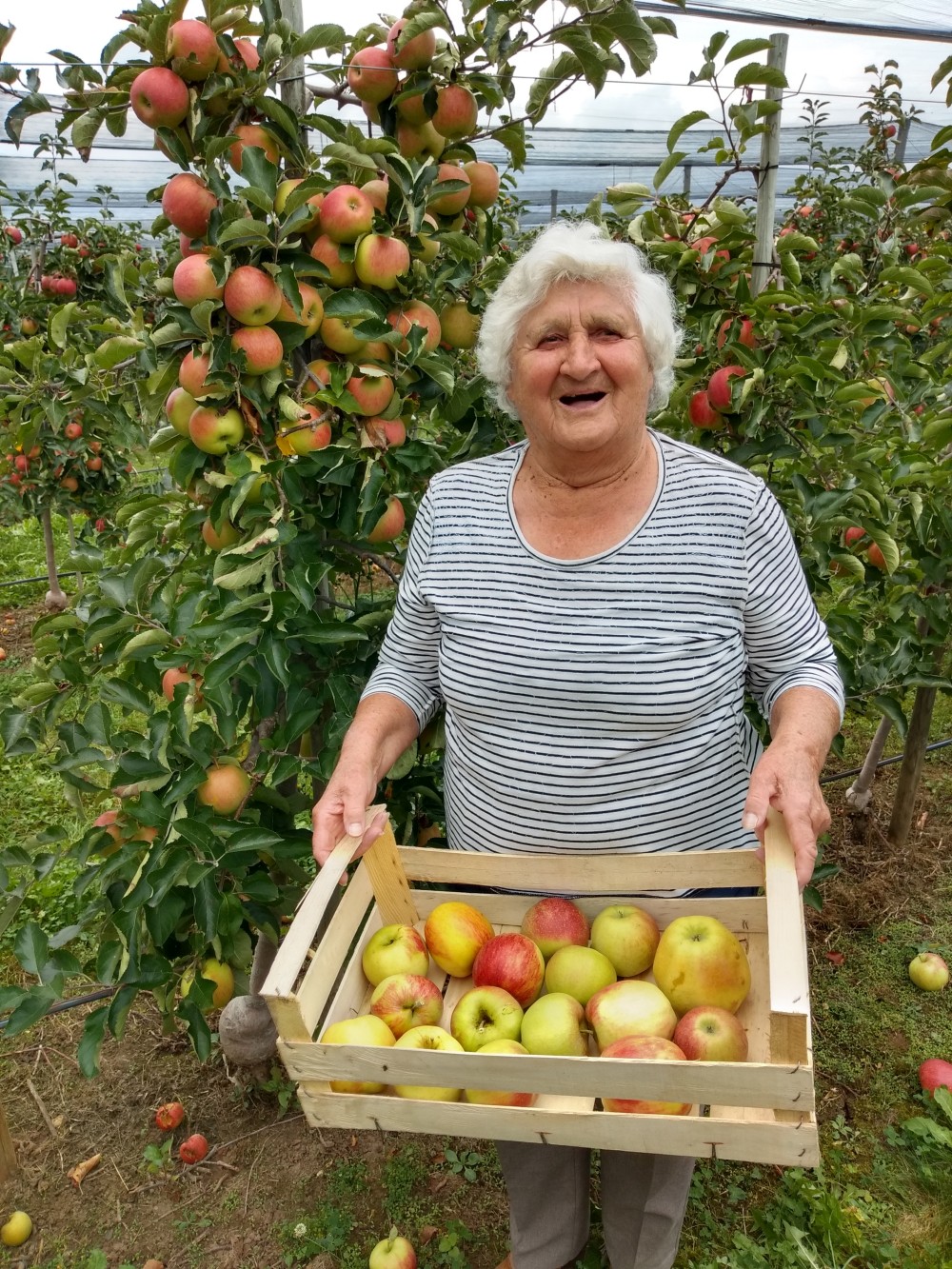Froggit DP100 soil moisture sensor in comparison with SMT100
This golden October inspires to experiment. Some time ago I received the low-cost Froggit DP100 wireless soil moisture sensor for testing. Today the Froggit DP100 was put up against the professional soil moisture sensor SMT100.
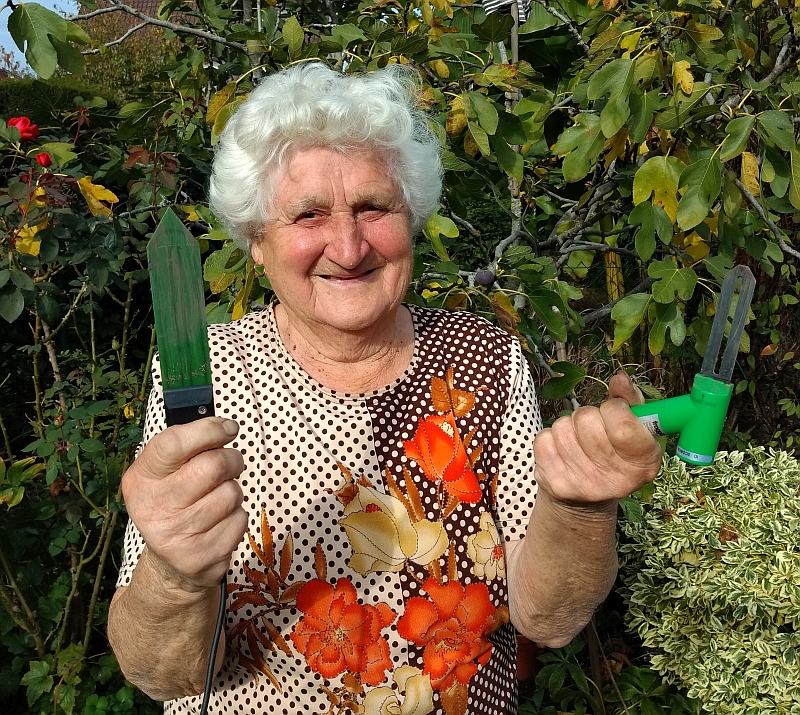
Two pots and garden soil were used as testing environments.
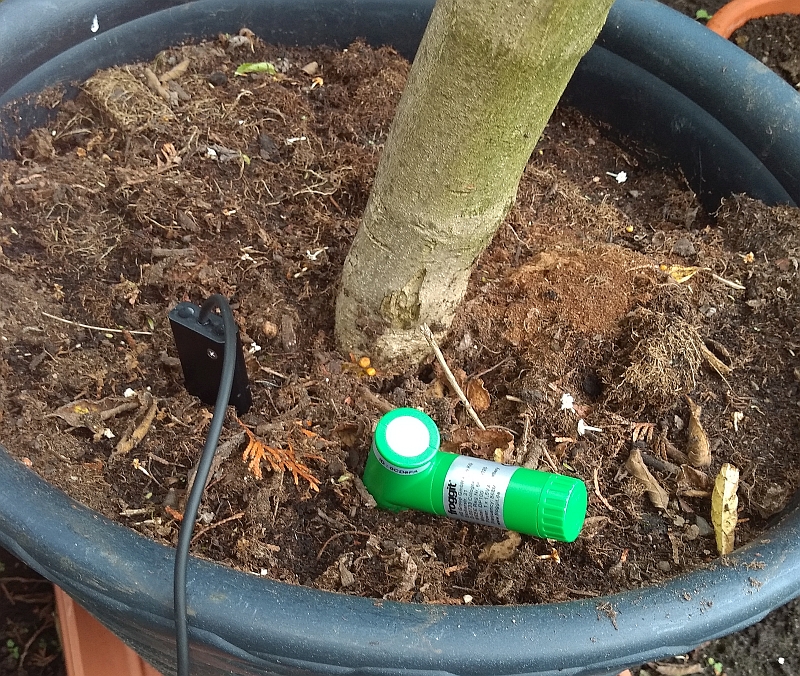
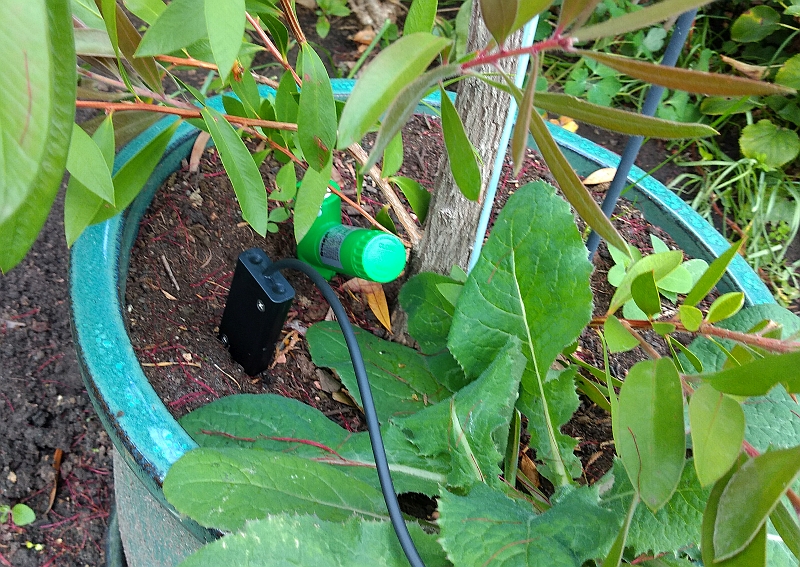
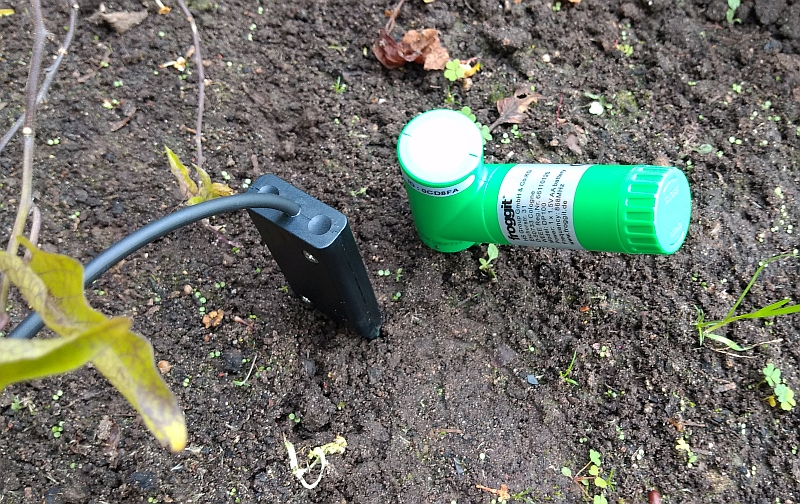
ESP32 board with a RFM95 radio module was used as the receiver for the Froggit DP100, while the SMT100 was connected by cable to my notebook via a USB to RS-485 adapter.
The measurement results are shown here:
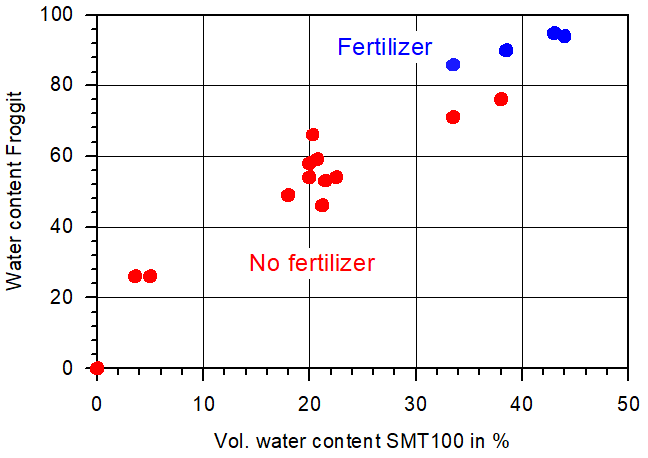
The pore volume of natural soils usually lies between 37% and 45% (see Bodenkunde online, note: in highly peaty soils or special substrates used in horticulture, there may be a larger pore volume). Thus, at full saturation, only a maximum water content in this order of magnitude can be achieved, as also shown by the measured data of the SMT100. The Froggit DP100, on the other hand, already shows a value of 50% at 20% water content. If saline fertiliser is added, the soil moisture reading of the SMT100 remains unaffected, while the values of the Froggit DP100 jump upwards and indicate up to 95% water content. Therefore, I cannot use the absolute values of the Froggit DP100. The manual for the Froggit DP100 also addresses this problem:
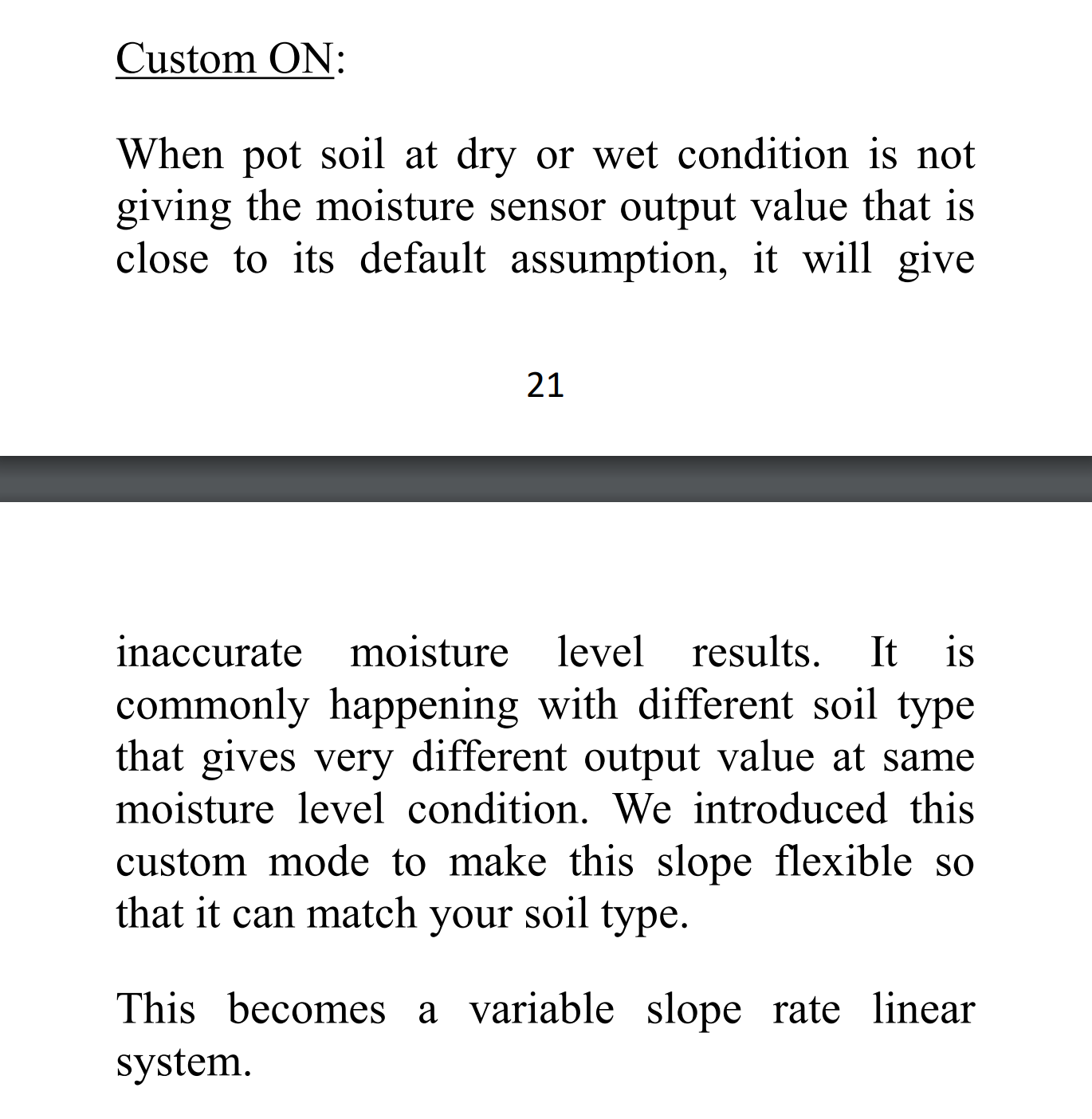
This can be understood as meaning that one must set up an individual calibration function for each soil type (and soil density, fertiliser concentration, etc.). Nevertheless, the Froggit DP100 can be of assistance when setting irrigation thresholds. It reacts to rising soil moisture and can therefore be used as an indicator of water content. I myself stick to the well-proven SMT100, which has been doing its job reliably for years. This winter I am planning a radio solution for the SMT100 with LoRa. This new radio module has appealed to me: LoRa-E5-HF LoRaWAN Module with STM32WLE5JC, ideal for a DIY project in winter.


